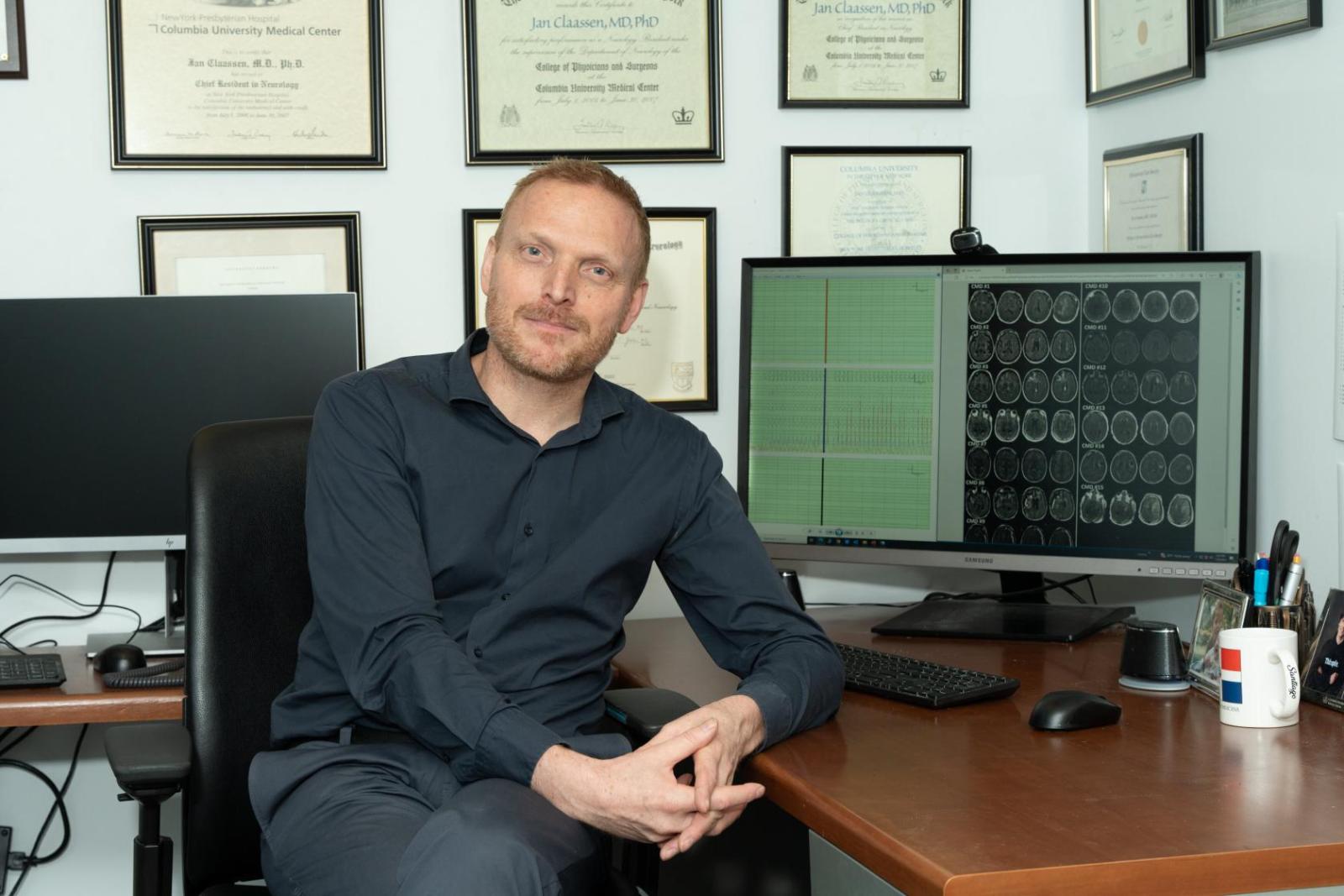As many as one in four patients who are unresponsive after a brain injury show sustained signs of hidden consciousness when tested with EEG or fMRI, according to a study published today in the New England Journal of Medicine.
The study, conducted by an international consortium of medical centers including Columbia University Irving Medical Center and Weill Cornell Medicine, found that unresponsive patients with severe brain injuries show, with surprising frequency, clear signs of cognitive function in EEG readings or brain scans when asked to perform simple physical movements. Patients in the study were comatose, vegetative, or in a minimally conscious state (when patients can track objects with their eyes but are unable to respond to commands).
With 241 unresponsive patients, the study is the largest to date to examine the prevalence of a phenomenon known as cognitive-motor dissociation or covert consciousness, which may appear clinically similar to a complete "locked-in syndrome" seen in patients who are conscious but can only communicate by moving their eyes. In cognitive-motor dissociation, patients are unable to move at all in response to commands but do generate brainwave activity suggesting they have some level of awareness.
One of the study's authors, neurocritical care specialist Jan Claassen, has been on the forefront of the research on consciousness disorders for the past 25 years since arriving at Columbia University Vagelos College of Physicians and Surgeons and NewYork-Presbyterian/Columbia University Irving Medical Center.

Jan Claassen
"I'll never forget the first time I saw a patient who'd appeared to be lost forever wake up," he recently told Columbia Magazine. "One day he was completely unresponsive, and the next time I saw him he was sitting at a table playing cards. There was something about that transformation that left me awestruck. I knew I had to devote my life to helping these people."
We spoke with Claassen about what the new findings could mean for patients with cognitive-motor dissociation in the future.
What does the study tell us about consciousness among comatose patients?
The study confirms that a large number of patients who appear behaviorally unresponsive are conscious and unable to express this. We now know that the phenomenon of cognitive-motor dissociation, seen in patients from several different centers with a variety of brain injuries, is actually common.
We have an obligation to try to reach out to these patients and build communication bridges with them. Having this information gives us the background we need to develop interventions to help them recover.
Do these patients eventually wake up?
Not every comatose patient with brain injury wakes up. However, my group has previously shown that people with cognitive-motor dissociation have a much higher chance of waking up and of functional recovery within a year after their injury. In a subsequent study, we found that this condition independently predicts time to recovery and may be a stronger predictor of recovery than other factors such as age or cause of brain injury.
Is there anything you can do to help someone with this condition recover?
At the moment, there are no specific treatments to support the recovery of a patient with cognitive-motor dissociation. But a number of treatments are being explored. This study will likely trigger much larger efforts to search for treatments.
Testing for hidden consciousness is currently limited to a few academic medical centers. Should it be expanded? What needs to be learned before physicians everywhere can start using these methods?
Efforts by my team and others are underway to expand access to this testing. But not every critical care unit has the resources or staff trained in using EEG or fMRI to detect cognitive-motor dissociation.
A remaining challenge is the risk of false negatives in unresponsive patients with injuries that have affected their ability to understand speech. We have some unpublished data showing that conscious, brain-injured patients with difficulty understanding spoken language are significantly less likely to show signs of cognitive-motor dissociation, even though they can respond to commands given in other ways. To counter this risk of false negatives with unresponsive patients, we are developing additional paradigms that don't rely on language comprehension.
References
More information
Jan Claassen, MD, is associate professor of neurology at Columbia University Vagelos College of Physicians and Surgeons and chief of critical care and hospitalist neurology at NewYork-Presbyterian/Columbia University Irving Medical Center.
The study, titled "Cognitive Motor Dissociation in Disorders of Consciousness," was published online in the New England Journal of Medicine on Aug. 15.
Participants in the consortium conducting the study were Weill Cornell Medicine, NewYork-Presbyterian/Columbia University Irving Medical Center, Rockefeller University Hospital, Massachusetts General Hospital, Addenbrooks Hospital (UK), University Hospital of Liege (Belgium), and Hospital Pitie-Salpetriere (France).






